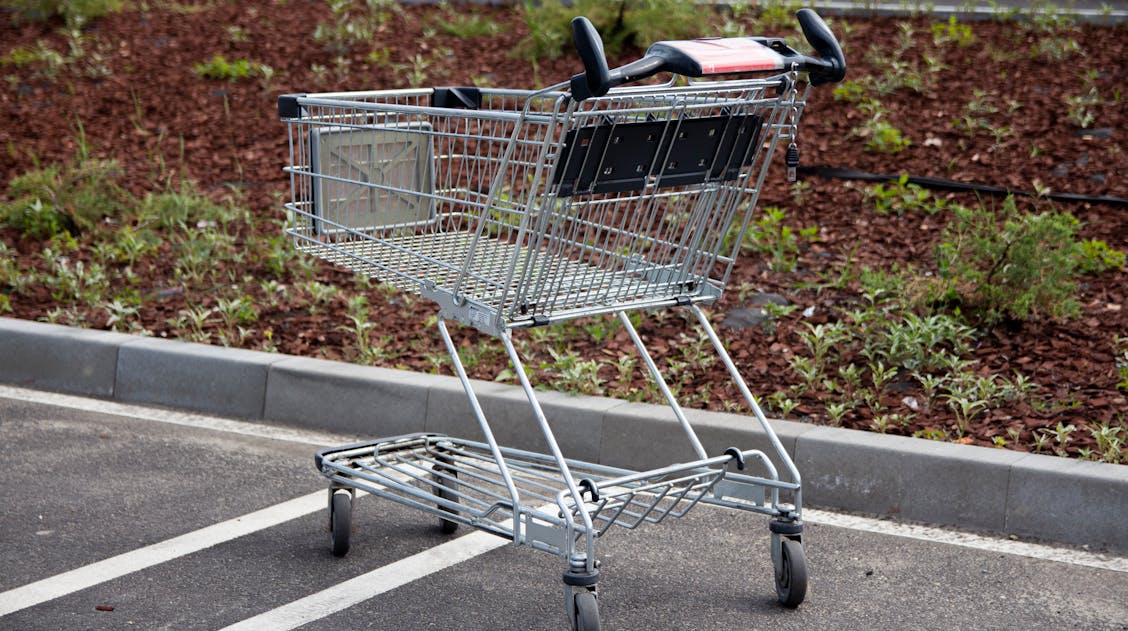
Abandoning Shopping Trolleys Has Huge Consequences for the Environment
We are all becoming more aware of our carbon footprint and the impact it has on our planet. Often, it’s the smallest actions that can have the most impact. One example of this is taking and abandoning shopping trolleys.
Significant numbers of shopping trolleys are taken out of service through abandonment each year. This leads to negative environmental, economic, and social impacts. Supermarkets have attempted to prevent shopping trolley abandonment via multiple measures, including using coin slots and wheel locking mechanisms. However, it is still a huge problem. The global trolley manufacturer Wanzl reported that in 2017 520,000 trolleys were reported as abandoned in the UK alone.
Moreover, this trend of abandoning shopping trolleys was also seen in Australia. The New South Wales local government reported that 550 abandoned trolleys a day were collected in 2020.
A study recently published in the Open Access journal Sustainability found that the carbon footprint of collecting and refurbishing abandoned trolleys adds up to the equivalent of flying from London to New York and back twice.
In this article, we explore how researchers from the University of Warwick, UK, performed a life cycle assessment of the manufacturing, subsequent abandonment, collection through diesel vans and refurbishment of shopping trolleys in the Canley suburban area of Coventry City, UK.
Circular Economy Principles
It’s important that we all take accountability for our individual carbon footprint and learn how to be as sustainable as possible to take care of the planet. The circular economy principles are one system that can help to achieve this.
These principles allow materials to avoid becoming waste products even at the end of their lifecycle. The products are kept in circulation via maintenance, reuse, refurbishment, remanufacturing, recycling, and composting.
Circular economy is defined by the Environmental Protection Agency (EPA) as “a systems-focused approach which involves industrial processes and economic activities that are restorative or regenerative by design, enables resources used in such processes and activities to maintain their highest value for as long as possible, and aims for the elimination of waste through the superior design of materials, products, and systems.”
The core purposes of a circular economy are to eliminate waste and pollution, keep products and materials in use at their highest value and regenerate natural systems.
The researchers used the principles of circular economy and compared the impact of locating misused trolleys and refurbishing them against manufacturing new trolleys to replace abandoned trolleys.
Analysing the lifecycle of a shopping trolley
The researchers analysed the environmental impact of trolleys through their lifecycle. Starting at manufacturing and ending with their retrieval and disposal. Supermarket trolleys have been given a lifespan of 15 years, but many do not fulfil this purpose.
“Thousands of shopping trolleys are reported as abandoned in the UK every year. When you multiply the carbon impact of retrieving each one, it becomes both significant and concerning,” explains Dr. Neill Raath, Assistant Professor at WMG, University of Warwick, who led the research.
The study focused on evaluating the environmental impact of collecting and processing abandoned shopping trolleys around the Canley and Warwick University area of Coventry, UK. This involved conducting a hotspot analysis focusing on 3 main life cycle stages: the manufacturing stage, the collection stage and the transport and refurbishment stage.
The manufacturing stage refers to the upstream processes of raw materials, consisting of zinc-coated mild steel for the fabricated frame and chassis, as well as welding and forming operations.
The middle stage, the collection, involved the use of a collection van; the researchers considered the ecological impacts through diesel fuel consumption during trolley collection around the university and Canley suburban area.
The final stage, transport and refurbishment, accounted for the environmental impact of transporting the trolleys to the refurbishment centre in Tibshelf, UK and the refurbishment processes.
Manufacturing new trolleys vs refurbishing abandoned trolleys
The researchers identified that the process with the greatest impact on the environment was the manufacturing stage. Moreover, they identified that manufacturing one shopping trolley had a global warming impact of 65.14 kg CO₂ equivalent.
The researchers identified that the environmental impact of collecting one trolley and delivering it to its original supermarket was 0.69 kg CO₂ equivalent. In addition, the researchers found that the environmental impact of the collection, transportation and refurbishment of one trolley was significantly less than manufacturing, reporting 5.50 kg CO₂ equivalent.
“We found that one trolley would have to be collected 93 times by a diesel van to have the same environmental impact as manufacturing a new one.” – Dr. Neil Raath.
The researchers conclude that any environmental impact caused by collecting and refurbishing trolleys is minimal in comparison to the manufacturing of new replacement trolleys. They also explain that trolley abandonment prevention and keeping them in use for as long as possible should be a priority for the public as well as supermarkets. In addition, this study reinforces the importance of utilising circular economy principles for protecting the planet from all human impacts.
“While it is unlikely that we can ever stop trolleys from being abandoned, we hope that next time people see a trolley in an alley or park bush, they’ll consider the environmental impact of letting it go unused,” Dr Neil Rath explained.
If you enjoyed this article and would like to submit research in this area, please see the collection Circular Economy Approaches for Lifecycles of Products and Services.










